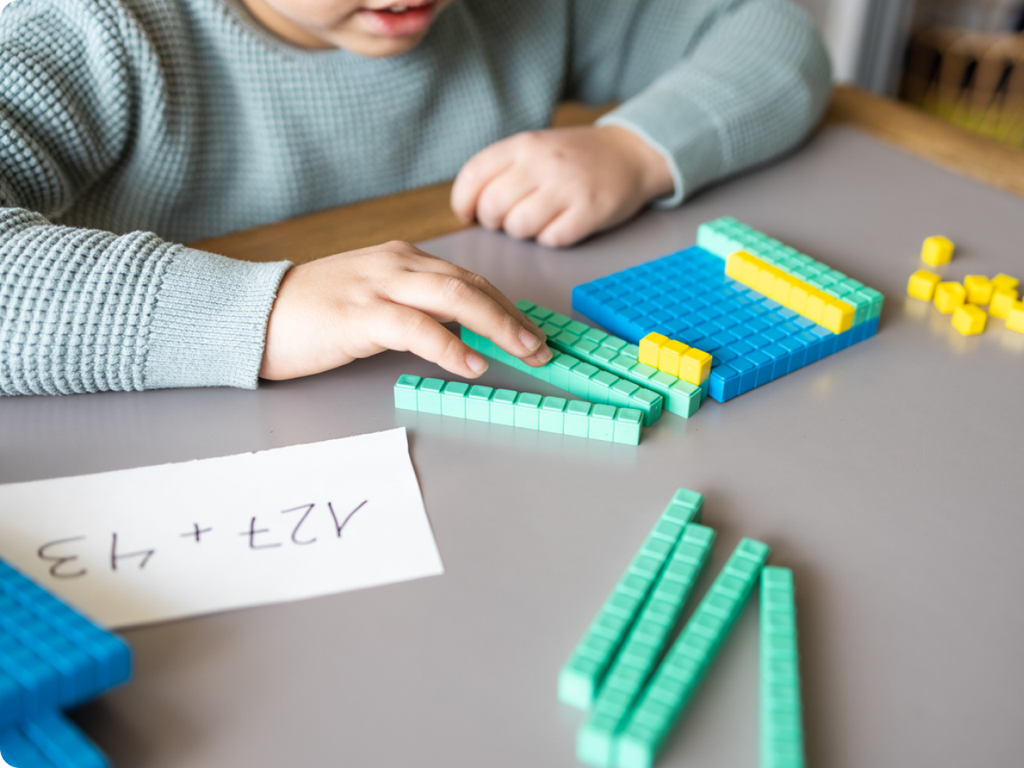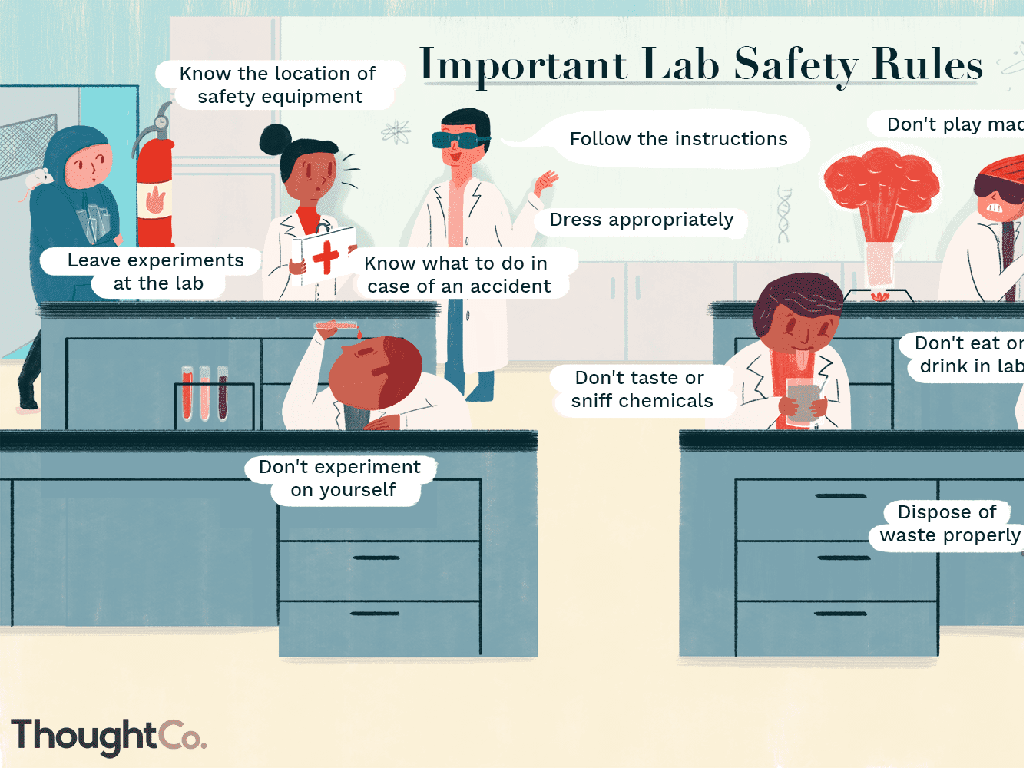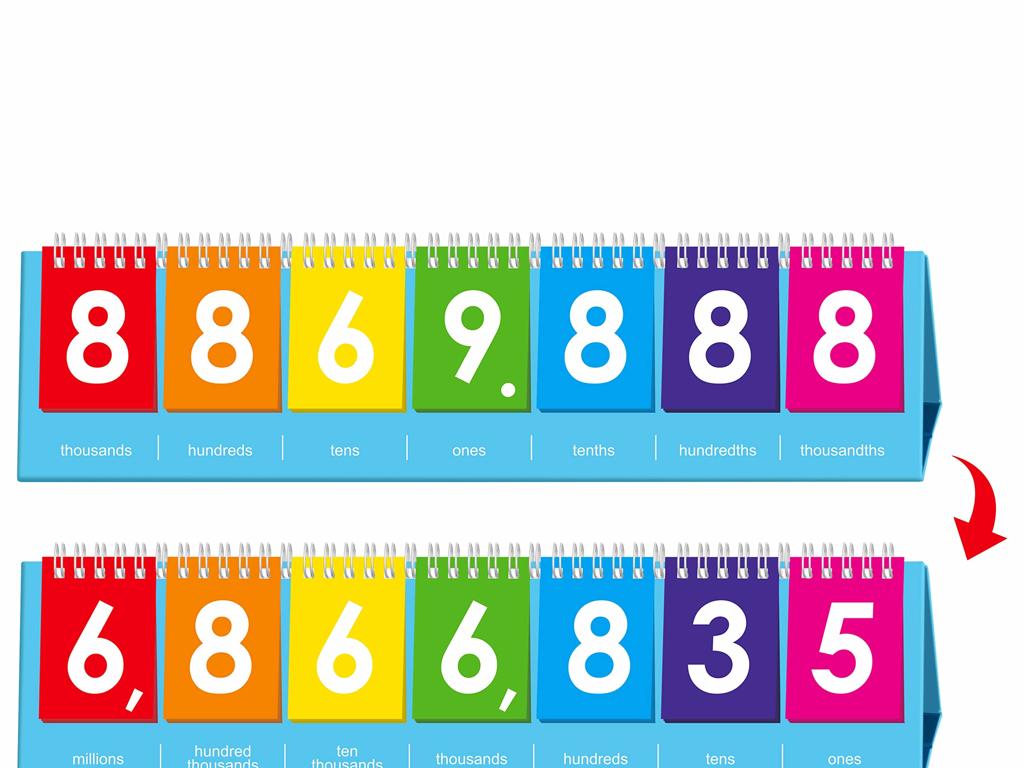Identify Reactants And Products
Subject: Science
Grade: Eighth grade
Topic: Chemical Reactions
Please LOG IN to download the presentation. Access is available to registered users only.
View More Content
Introduction to Chemical Reactions
– Understanding chemical reactions
– Identifying reactants
– Substances that start a chemical reaction
– Recognizing products
– Substances formed as a result of a chemical reaction
– Reactants to products process
– How reactants transform into products during the reaction
|
This slide introduces the basic concepts of chemical reactions, focusing on the roles of reactants and products. A chemical reaction involves the transformation of substances through breaking and forming of chemical bonds. Reactants are the starting materials that undergo change, while products are the new substances formed as a result of the reaction. Emphasize the importance of balancing chemical equations to show the conservation of mass. Provide examples of simple reactions, such as the combination of hydrogen and oxygen to form water, to illustrate the concept. Encourage students to think of reactions they observe in everyday life, like the rusting of iron or baking a cake, as practical applications of these concepts.
Reactants in a Chemical Reaction
– Define reactants in reactions
– Substances that start a chemical reaction
– Examples of common reactants
– Hydrogen and oxygen in water formation
– Reactants’ role in reactions
– They interact to form new substances
– Reactants to products conversion
|
This slide introduces the concept of reactants within the context of chemical reactions. Reactants are the starting materials in any chemical reaction that undergo a process to form new substances, called products. For example, when hydrogen (H2) and oxygen (O2) react, they form water (H2O). It’s crucial for students to understand that reactants are necessary for the occurrence of a chemical reaction and that the properties of reactants differ from the properties of the products formed. Encourage students to think of reactants as the ‘ingredients’ needed for the ‘recipe’ of a chemical reaction. Discuss the conservation of mass by explaining that the atoms in the reactants rearrange to form the products, but no atoms are lost or gained in the process.
Products in a Chemical Reaction
– Define products in reactions
– Substances formed as a result of a chemical reaction
– Examples of reaction products
– Water (H2O) from hydrogen and oxygen; Salt (NaCl) from sodium and chlorine
– Identifying products in equations
– Look for substances on the right side of a chemical equation
– Practice with sample equations
– Use equations like 2H2 + O2 -> 2H2O to find products
|
This slide aims to help students understand what products are in the context of chemical reactions. Products are the substances that result from the chemical change, and they are found on the right side of a chemical equation. Provide clear examples, such as the formation of water from hydrogen and oxygen, and salt from sodium and chlorine. Teach students to identify products by looking for the new substances formed after the arrow in a chemical equation. Encourage them to practice with various equations to become familiar with this concept. This foundational knowledge is crucial for understanding how chemical reactions work and for predicting the outcomes of such reactions.
Balancing Chemical Equations
– Understand Conservation of Mass
– Matter is neither created nor destroyed
– Learn steps to balance equations
– List steps: Identify reactants/products, count atoms, add coefficients
– Practice with example equations
– Use H2 + O2 -> H2O to demonstrate
– Emphasize accuracy in balancing
|
This slide introduces the concept of balancing chemical equations, starting with the Law of Conservation of Mass, which states that matter is neither created nor destroyed in a chemical reaction. This law underpins the need for equations to be balanced. Provide a clear, step-by-step guide on how to balance chemical equations, including counting atoms of each element and adding coefficients to balance the reactants and products. Use simple examples like the combination of hydrogen and oxygen to form water as a practice exercise. Emphasize the importance of accuracy in balancing equations, as this is crucial for correctly representing the chemical reaction. Encourage students to practice with various equations to become comfortable with the process.
Identifying Reactants and Products in Chemical Reactions
– Analyze a chemical equation
– Break down the parts of an equation to see what reacts and what is formed.
– Label reactants and products
– Reactants are substances before the arrow, products are after.
– Understand the equation’s arrow
– The arrow signifies the direction of the reaction, from reactants to products.
– Practice with example equations
– Use sample equations to apply your knowledge.
|
This slide is aimed at helping students identify and understand the components of a chemical equation. Start by explaining that a chemical equation is a symbolic representation of a chemical reaction. The reactants, which are the starting substances, are listed on the left side of the arrow, while the products, which are the substances formed, are on the right. The arrow points from reactants to products, indicating the direction of the reaction. Provide several examples of simple chemical equations and guide the students to label the reactants and products. Encourage them to look for patterns, such as conservation of mass and the rearrangement of atoms. As an activity, students can work on different equations to strengthen their understanding.
Class Activity: Create Your Own Reaction
– Form groups for the experiment
– Gather all necessary materials
– Beakers, test tubes, chemicals, safety goggles
– Follow safety precautions strictly
– Wear goggles, no loose clothing, tie back hair
– Document reactants and products
|
This slide is to guide the class through a hands-on group activity where students will create their own chemical reactions. Divide the class into small groups and provide a list of materials needed for the experiment, including beakers, test tubes, and various chemicals. Emphasize the importance of safety in the lab: wearing goggles, securing loose clothing, and tying back long hair. Each group will mix specified reactants and observe the resulting products, documenting their findings. The teacher should circulate to ensure safety protocols are followed and to assist with any questions. Possible activities include combining vinegar and baking soda to observe gas production, or mixing various solutions to precipitate solids. The goal is for students to identify reactants and products in real-time and understand the process of a chemical reaction.
Conclusion: Reactants and Products in Chemical Reactions
– Recap of chemical reactions
– Significance of reactants and products
– Knowing reactants and products is crucial for predicting chemical reaction outcomes.
– Engage in Q&A session
– Ask questions to clarify your understanding of the topic.
– Review and reinforce learning
– Summarize the lesson to solidify the concepts learned.
|
This slide aims to wrap up the lesson on chemical reactions by revisiting the main points discussed. Emphasize the importance of being able to identify reactants and products as it allows students to predict the outcomes of chemical reactions and understand the process of matter transformation. Encourage students to ask any lingering questions they might have to ensure a clear understanding of the topic. Use this opportunity to assess comprehension and address any misconceptions. The Q&A session will also help students feel more confident about the material. Conclude by summarizing the key concepts to reinforce the learning objectives of the lesson.






